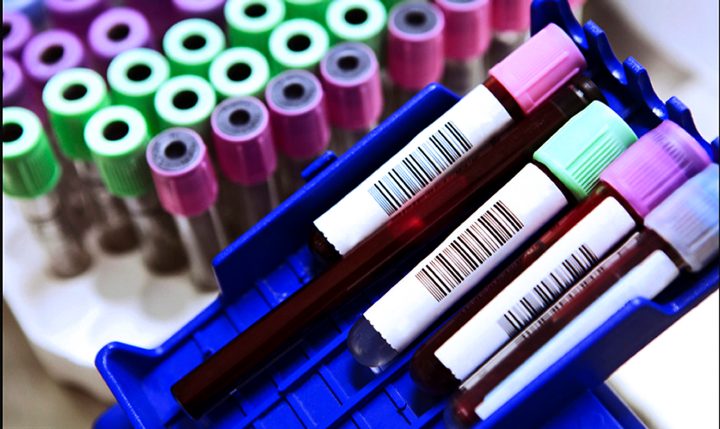SPOTLIGHT
Health boost: New TB testing strategy improves diagnosis in clinics by 17%

Almost 400,000 people in South Africa fall ill with tuberculosis every year. Of these, up to 150,000 are never diagnosed. Now, a new testing strategy has been shown to improve TB detection at clinics by as much as 17%.
Though estimates vary and are relatively uncertain, in the region of 360,000 to 390,000 people in South Africa fall ill with tuberculosis (TB) every year. Of these, about 120,000 to 150,000 are never diagnosed. The fact that so many people with TB are never diagnosed is one reason why transmission in South Africa remains extremely high. TB remains one of the top killers in the country.
The problem is complex. Presenting findings from South Africa’s first national TB Prevalence Survey last month, Dr Sizulu Moyo of the Human Sciences Research Council (HSRC) explained that care-seeking among participants with symptoms suggestive of TB was delayed, with almost two thirds having not sought care at the time of their participation in the survey, and 60.2% of these reporting that they were still planning to seek care. A further 26.6% regarded the symptoms as not serious and thus did not seek care.
This begs the question, how should we go about diagnosing more people with TB more quickly?
Spotlight previously reported that the increased use of mobile X-ray machines and artificial intelligence might be part of the solution. New evidence has been published suggesting that a new targeted testing approach could be another missing piece of the puzzle.
What is TUTT?
TUTT stands for Targeted Universal Testing for TB. The essence of the TUTT strategy is to give everyone at high risk of TB a test. This contrasts with the current way of doing things, where people are screened and only those who tell clinic staff that they have symptoms suggestive of TB are actually tested.
As a result, with TUTT, some patients who come to the clinic for other conditions will be offered TB tests even if they don’t show any TB symptoms. TB symptoms may include a cough, chest pain, fatigue, weight loss and night sweats.
The findings of the first large study to test the TUTT approach in South Africa were recently presented at the Conference on Retroviruses and Opportunistic Infections, one of the top international conferences for HIV, TB and now also Covid-19 science. The findings were presented at the 51st Union World Conference on Lung Health last year.
The strategy was found to result in a 17% increase in TB diagnosis in clinics, compared to the existing approach. Our back-of-the-envelope calculations suggest that if TB diagnosis in South Africa overall were to be improved by 17%, there would be around 40,000 additional cases detected every year – although such extrapolations should obviously be treated with caution.
Presenting the TUTT study at a media briefing last week, co-investigator Dr Neil Martinson, from Wits University’s Perinatal HIV Research Unit, explained that they conducted a cluster randomised trial involving 62 large clinics in three provinces – KwaZulu-Natal, Gauteng and the Western Cape. These provinces all have a high burden of TB.
In a cluster randomised trial, it is not individuals who are randomised to different interventions, but clusters of individuals – in this case, the clusters were the different clinics. Half the clinics were randomly allocated to the TUTT strategy while the other half continued as usual. It is in the half where TUTT was implemented that diagnosis improved by 17% on average.
At the TUTT clinics, TB tests were offered to everyone living with HIV, everyone who reported having close contact with a TB patient and everyone who reported having TB in the past two years (all groups considered to be at high risk of TB).
The tests involved fieldworkers at these clinics collecting sputum from people from March 2019 to March 2020. The sputum samples were then processed and tested in two ways – using culture (growing it in a lab) and testing it using the Gene Xpert Ultra test (an automated molecular test).
The positivity rate for the various high-risk groups being tested for TB at TUTT clinics in the absence of TB symptoms was surprisingly high – 6% in people living with HIV, 7.5% in close contacts of people with TB and 12% in people who had TB in the last two years.
“The study showed that high-risk people who do not report TB symptoms may have laboratory-confirmed TB, which under usual circumstances would not be detected.
“The key question now is how to treat these people with early disease,” said Martinson.
He also said the study results suggest that “universal testing for TB, irrespective of presence of symptoms, may be useful in reducing the numbers of undiagnosed individuals with TB”.
A milestone worth celebrating
Prof Martie van der Walt, director of the tuberculosis platform at the South African Medical Research Council, said TUTT has the potential to revolutionise how we have always gone about finding people with disease.
“People with symptoms do not come to clinics for their TB symptoms… maybe for other conditions, but not for TB.
“TB is under or undiagnosed in men, the youth and the elderly. If we do TUTT among these groups, we will reach many of the undiagnosed,” she said.
Van der Walt said under the normal case-finding approach, people usually already have advanced disease and have spread the disease to their close contacts and in the community.
With TUTT, she said, they will diagnose TB earlier, in some cases before they can spread the disease, “and this is where the big change is going to be – that we can prevent ongoing transmission of the disease in the community”.
Moyo told Spotlight the study is significant since we know that relying on symptom screening misses TB cases. “Many studies have shown this, including the recent South African TB Prevalence Survey. This is progressive in moving toward more accurate algorithms that can help us detect more TB cases, and cases that we may be missing even within the health system.
“It is one way to increase detection in those at higher risk of TB,” she said.
Dr Limakatso Lebina, from the Wits University Perinatal HIV Research Unit and co-investigator of the TUTT study, agreed. “I think like any other disease, testing is the only way to be able to fight the disease. Just like in HIV, knowing your status is very important. Getting tested, especially when you are at risk, will give you something to act upon,” she said.
Improved patient outcomes
Van der Walt said that as TB is so widespread in the country, screening and testing ought to be part of the normal investigations when people go to clinics or doctors for any health needs.
“The impact of TUTT will lead to a lower TB burden in the country, which alleviates poverty and will lead to better quality of health for all. Many people do not know that the symptoms they experience are due to a disease or even TB, therefore they delay seeking care.
“With TUTT, we test and screen them every time they come to the clinic, and then give them information on why we test them. Thereby we increase the knowledge levels, and it may result in people with presumptive TB symptoms coming to clinics at a much earlier stage in their TB,” she explained.
Moyo stressed that TUTT is one of a number of solutions.
“We definitely need a multipronged approach and along the entire pathway. We need to identify all cases, and work such as this TUTT study help sharpen and improve thinking and application of case detection algorithms… we need to work with rapid and effective diagnostic tools, we need to use effective treatment that is easy to take, and we need to provide support for people to remain on and complete treatment.”
Extra costs
Lebina told Spotlight that most clinics coped well with the extra requirements of the TUTT strategy.
“We had to do a review of procurement processes for consumables for each clinic. Since there was an increase in sputum tests, we had to review the procurement of sputum jars and plastic bags, among other things.
“We had to put that into consideration and adjust the ordering to be able to do the necessary work as the load had increased,” she said.
She also said that as part of the intervention, fieldworkers were placed in each clinic to support the screening and testing of patients so that the regular staff was not burdened.
Lebina said they are talking to the national department of health and other organisations working on TB, such as Pepfar (the US President’s Emergency Plan for Aids Relief) about how they can roll out TUTT on a larger scale. Before that can be done, however, a cost-effectiveness study will have to be conducted to determine whether the extra costs associated with TUTT are worth the benefits.
Health department director in the TB control and management cluster, Dr Lindiwe Mvusi, who also spoke at the media briefing with Martinson, said it was important to make sure that those in the TB field sustained the gains made. She said she was happy with the findings of the study.
“The TB [treatment] situation in the country is showing gains but we are still one of the countries contributing to the global burden and patients are still being undiagnosed.
“We have seen gaps in terms of the cases of TB we should be reporting, as shown in South Africa’s first TB prevalence survey. We need to increase the number of people we diagnose, and this will help us address some of the gaps and challenges.
“The study will help us focus on the numbers that we are missing, and we should really leverage the expertise,” she said. DM




















 Become an Insider
Become an Insider
Comments - Please login in order to comment.